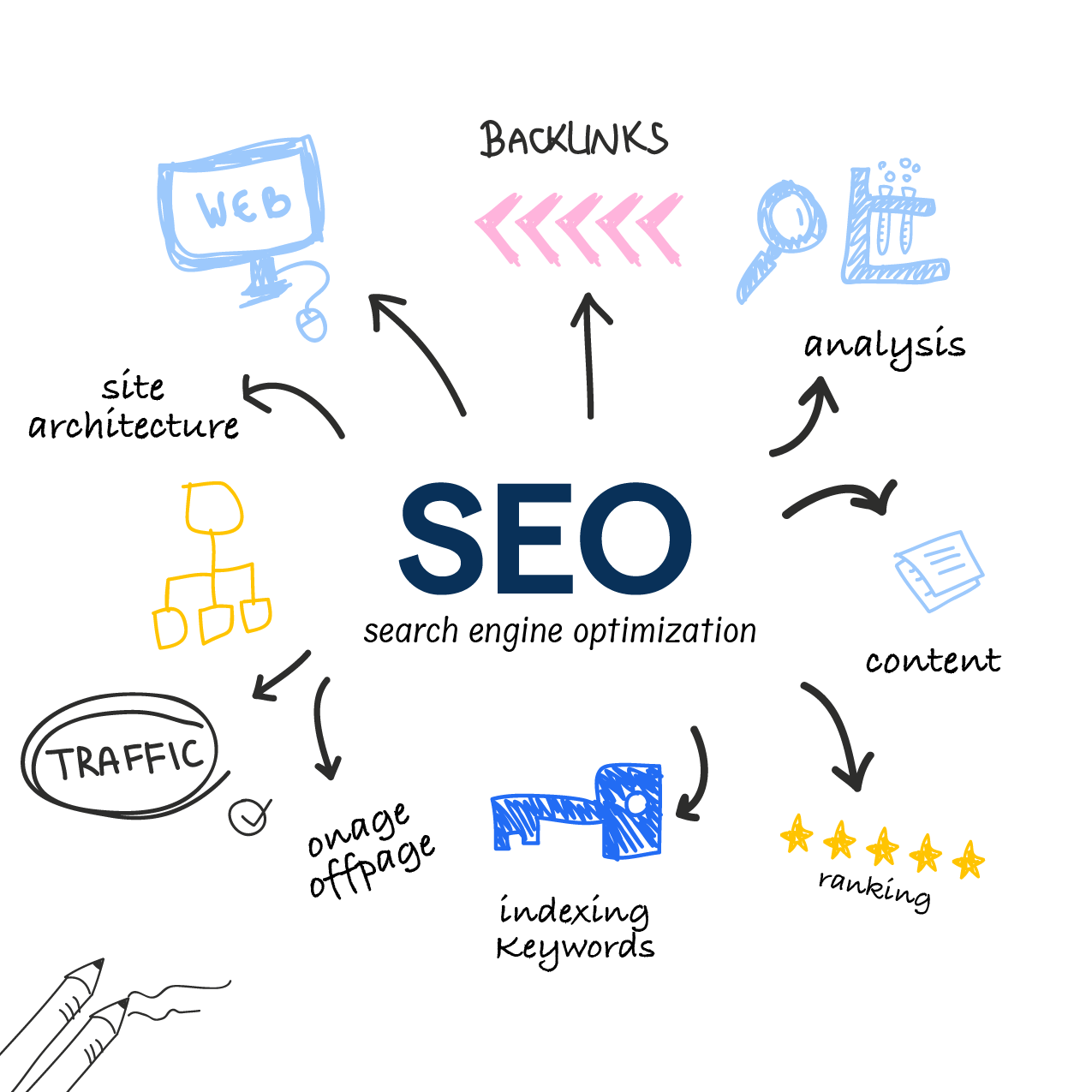Organic Search Optimization: The Ultimate Guide

In today’s digital-first world, organic search optimization is the backbone of any successful online presence. With billions of searches happening every day, ranking high on search engine results pages (SERPs) is crucial for driving traffic, building brand authority, and achieving business goals. Whether you’re a small business owner, a marketer, or a content creator, mastering organic search optimization can help you stand out in a crowded online space.
This comprehensive guide will walk you through everything you need to know about organic search optimization, from the basics to advanced strategies. By the end of this article, you’ll have actionable insights to improve your website’s visibility, attract more organic traffic, and outrank your competitors.
Key Takeaways
- Organic search optimization is a long-term strategy to improve your website’s visibility on search engines.
- Focus on relevant keywords, high-quality content, and technical SEO to rank higher.
- User experience (UX) and mobile optimization are critical for organic search success.
- Regularly monitor and analyze your performance using tools like Google Analytics and Search Console.
- FAQs and structured data can enhance your content’s visibility in SERPs.
What is Organic Search Optimization?
Organic search optimization, often referred to as SEO (Search Engine Optimization), is the process of improving your website’s visibility in unpaid, organic search results. Unlike paid advertising, organic search optimization focuses on creating content and optimizing your site to align with search engine algorithms.
The goal is simple: to rank higher for relevant keywords that your target audience is searching for. This involves a combination of on-page, off-page, and technical SEO strategies.
Why is Organic Search Optimization Important?
- Cost-Effective Traffic: Organic traffic is free, making it a cost-effective way to attract visitors to your site.
- Higher Credibility: Users tend to trust organic results more than paid ads.
- Long-Term Results: Unlike paid campaigns, the effects of organic search optimization are long-lasting.
- Improved User Experience: SEO practices often align with better site design and usability.
- Competitive Advantage: Ranking higher than your competitors can significantly boost your market share.
How to Optimize for Organic Search: A Step-by-Step Guide
1. Keyword Research: The Foundation of Organic Search Optimization
Keyword research is the backbone of any successful SEO strategy. It involves identifying the terms and phrases your target audience is searching for. Use tools like Google Keyword Planner, Ahrefs, or SEMrush to find relevant keywords with high search volume and low competition.
- Focus on Long-Tail Keywords: These are longer, more specific phrases that often have lower competition and higher conversion rates. For example, instead of targeting “SEO,” you could target “best SEO practices for small businesses.”
- Use LSI Keywords: Latent Semantic Indexing (LSI) keywords are terms related to your primary keyword. For example, if your primary keyword is “organic search optimization,” LSI keywords might include “SEO best practices” or “search engine ranking factors.”
- Analyze Competitor Keywords: Tools like Ahrefs and SEMrush allow you to spy on your competitors’ keywords and identify gaps in your strategy.
2. On-Page SEO: Optimizing Your Content
On-page SEO involves optimizing individual pages on your website to rank higher and earn more relevant traffic. Here’s how to do it:
- Title Tags: Include your primary keyword (e.g., “Organic Search Optimization”) in the title tag. Keep it under 60 characters to ensure it displays fully in SERPs.
- Meta Descriptions: Write compelling meta descriptions with your keyword to improve click-through rates (CTR). Aim for 150-160 characters.
- Headers (H1, H2, H3): Use headers to structure your content. Include keywords naturally to help search engines understand your content.
- Content Quality: Create high-quality, engaging, and informative content that addresses user intent. Avoid keyword stuffing and focus on providing value.
- Internal Linking: Link to other relevant pages on your site to improve navigation and SEO. For example, if you’re writing about “on-page SEO,” link to a related article about “technical SEO.”
- Image Optimization: Use descriptive file names and alt text for images. Compress images to improve page speed.
3. Technical SEO: The Backbone of Organic Search Optimization
Technical SEO ensures that your website is easy to crawl and index by search engines. Key aspects include:
- Site Speed: Optimize loading times using tools like Google PageSpeed Insights. Compress images, enable browser caching, and minimize CSS and JavaScript files.
- Mobile Optimization: Ensure your site is mobile-friendly, as Google uses mobile-first indexing. Use responsive design and test your site on multiple devices.
- XML Sitemap: Submit an XML sitemap to help search engines crawl your site. This is especially important for large websites with many pages.
- Robots.txt: Use this file to control which pages search engines can access. For example, you can block duplicate content or admin pages.
- Structured Data: Implement schema markup to enhance your listings in SERPs. For example, use FAQ schema to make your content eligible for rich snippets.
- Canonical Tags: Use canonical tags to avoid duplicate content issues. This tells search engines which version of a page is the original.
4. Content Strategy: Creating SEO-Friendly Content
Content is king in organic search optimization. Here’s how to create content that ranks:
- Solve User Intent: Focus on creating content that answers your audience’s questions. Use tools like AnswerThePublic to find common queries related to your topic.
- Use Semantic Keywords: Incorporate related terms and phrases to improve context. For example, if your primary keyword is “organic search optimization,” use terms like “SEO tips” or “search engine ranking.”
- Visual Content: Use images, infographics, and videos to enhance engagement. Visual content is more likely to be shared, increasing your reach.
- Regular Updates: Keep your content fresh and up-to-date to maintain relevance. For example, update statistics, add new examples, or revise outdated information.
- Content Length: Aim for comprehensive, in-depth content. Studies show that longer content (1,500+ words) tends to rank higher.
5. Off-Page SEO: Building Authority
Off-page SEO involves activities outside your website that impact your rankings. The most important aspect is link building.
- Backlinks: Acquire high-quality backlinks from authoritative websites. Reach out to industry blogs, submit guest posts, or create shareable content like infographics.
- Social Signals: Promote your content on social media to increase visibility. While social signals aren’t a direct ranking factor, they can drive traffic and improve brand awareness.
- Guest Blogging: Write guest posts for reputable sites in your niche. This not only builds backlinks but also establishes you as an authority in your field.
- Local SEO: If you have a local business, optimize for local search by creating a Google My Business profile and getting reviews.
6. User Experience (UX): A Ranking Factor
Google prioritizes websites that offer a great user experience. Key UX factors include:
- Easy Navigation: Ensure your site is easy to navigate. Use a clear menu structure and include a search bar.
- Readable Content: Use short paragraphs, bullet points, and subheadings to make your content easy to read.
- Secure Website: Use HTTPS to protect user data. Google gives a ranking boost to secure websites.
- Low Bounce Rate: Create engaging content to keep users on your site longer. Use internal links to guide users to related content.
- Accessibility: Ensure your site is accessible to all users, including those with disabilities. Use alt text for images and provide transcripts for videos.
7. Analytics and Monitoring: Track Your Progress
Use tools like Google Analytics and Google Search Console to monitor your organic search performance. Track metrics like:
- Organic Traffic: The number of visitors coming from search engines.
- Keyword Rankings: How your target keywords are performing.
- Bounce Rate: The percentage of visitors who leave after viewing one page.
- CTR: Click-through rate from SERPs.
- Conversion Rate: The percentage of visitors who take a desired action, such as making a purchase or filling out a form.
Regularly analyze this data to identify areas for improvement. For example, if your bounce rate is high, consider improving your content or site design.
Advanced Organic Search Optimization Strategies
1. Voice Search Optimization
With the rise of voice assistants like Siri and Alexa, optimizing for voice search is becoming increasingly important. Focus on natural language and long-tail keywords. For example, instead of “best SEO tools,” target “what are the best SEO tools for beginners?”
2. Video SEO
Video content is highly engaging and can improve your rankings. Optimize your videos by using descriptive titles, tags, and transcripts. Host your videos on platforms like YouTube and embed them on your site.
3. E-A-T: Expertise, Authoritativeness, Trustworthiness
Google prioritizes content that demonstrates expertise, authoritativeness, and trustworthiness. Showcase your credentials, cite reputable sources, and provide accurate information.
4. International SEO
If you target a global audience, optimize for international SEO. Use hreflang tags to indicate language and region, and create localized content.
FAQs About Organic Search Optimization
1. What is the difference between organic search and paid search?
Organic search refers to unpaid, natural search results, while paid search involves paying for ads to appear at the top of SERPs.
2. How long does it take to see results from organic search optimization?
SEO is a long-term strategy. It can take anywhere from 3 to 6 months to see significant results.
3. What are the most important ranking factors for organic search?
Key ranking factors include high-quality content, backlinks, site speed, mobile-friendliness, and user experience.
4. Can I do organic search optimization on my own?
Yes, with the right tools and knowledge, you can optimize your website for organic search. However, hiring an expert can save time and improve results.
5. How often should I update my content for SEO?
Regular updates are essential. Aim to review and update your content every 6 to 12 months.
Conclusion
Organic search optimization is a powerful strategy to improve your website’s visibility, attract more traffic, and achieve your business goals. By focusing on relevant keywords, creating high-quality content, and optimizing your site’s technical aspects, you can rank higher on search engines and stay ahead of the competition.
Remember, SEO is an ongoing process. Stay updated with the latest trends, monitor your performance, and continuously refine your strategy. With patience and persistence, your efforts in organic search optimization will pay off in the long run.





